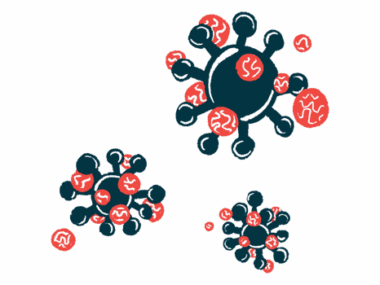Maternal jaundice in ICP tied to worse pregnancy outcomes: Study
Researchers link jaundice to premature birth, low birth weight
Written by |

Women who develop a subtype of intrahepatic cholestasis of pregnancy (ICP) marked by jaundice — a yellowing of the skin or whites of the eyes — are more likely to give birth prematurely than those with other subtypes, particularly if ICP arises before seven months of gestation, a study showed.
Babies born to mothers with that subtype, called ICP1, were also more likely to have abnormalities in the amniotic fluid that surrounds the baby in the womb, to have babies with Apgar scores no higher than 6 at one minute after birth — indicating potentially low blood oxygen levels — and to need neonatal intensive care.
Higher total blood levels of bile acids, components of a digestive fluid called bile, were also associated with worse pregnancy outcomes.
“The outcome of pregnancy in women with ICP is closely related to the [total blood bile acid levels] and ICP subtype, which should be recognized in the clinic,” the researchers wrote.
The study “Associations of clinical subtypes and bile acid levels of intrahepatic cholestasis of pregnancy with pregnancy outcomes,” was published in Scientific Reports.
ICP subtypes
Cholestasis is a liver condition that occurs when bile doesn’t flow as well from the liver to the small bowel, where it would help break down fats. As a result, bile builds up in the liver, causing damage, and leaks into the bloodstream, causing jaundice and itchy skin.
During the late stages of pregnancy, some women develop a form of cholestasis called intrahepatic cholestasis of pregnancy that is linked to worse maternal and newborn outcomes.
Earlier work by researchers at the First Affiliated Hospital of Chongqing Medical University in China suggested that ICP can be divided into four subtypes based on the levels of three blood markers: blood levels of total bile acids (TBA); bilirubin, which in excess results in jaundice; and the liver enzyme alanine aminotransferase (ALT).
ICP1 — also known as the icteric type, meaning it is marked by jaundice — is characterized by elevated TBA, bilirubin, and ALT. ICP2 is similar to ICP1, but with normal bilirubin levels. ICP3 is characterized by elevated TBA but normal bilirubin and ALT, while ICP4 denotes elevated ALT but normal TBA and bilirubin.
That earlier work showed that ICP1 was linked to a higher risk of preterm birth (before 37 weeks of gestation) and cesarean section than other subtypes, indicating that blood TBA and other biomarkers may predict pregnancy outcomes.
Researchers at the First Affiliated Hospital and colleagues looked at the potential link between ICP subtypes, clinical and laboratory features, and pregnancy outcomes in 1,815 pregnant women with ICP.
ICP was classified as ICP1 in nearly 1 in 10 women (9.4%), ICP2 in 14.7%, ICP3 in more than a third (35.3%), and ICP4 in about two in five women (40.6%).
During follow-up (from initial diagnosis to delivery), 8.8% of all women returned to a normal state in which they had no signs of ICP. Most, however, remained in their initial subtype: 74.1% in ICP1, 59.6% in ICP2, 77.7% in ICP3, and 55.4% in ICP4.
Some women switched from one subtype to another, indicating that those blood biomarkers can change over time, and either normalize or become abnormal. For example, although ICP4 is marked by normal blood TBA, these levels “could still rise during pregnancy, which requires attention,” the team wrote.
In line with earlier findings, the study showed women with ICP1 were more likely than other subtypes to give birth to preterm babies.
Jaundice in ICP linked to meconium in amniotic fluid
The presence of meconium — a baby’s first stool — in the amniotic fluid was up to nearly twice as common in ICP1 as in other subtypes. When meconium is present in the amniotic fluid, the baby may inhale it into the lungs, which may cause breathing problems.
Up to three times more babies born to mothers with ICP1 were transferred to the neonatal intensive care unit (NICU) compared with other subtypes. Moreover, it was up to 7.5 times as common for those babies to have an Apgar score equal to or below 7 at one minute, indicating potential breathing problems.
Regardless of whether women had early-onset ICP (before 28 weeks of gestation) or late-onset ICP (at 28 weeks or later), those with ICP1 delivered the earliest and had babies with the lowest weights at birth. The presence of meconium and transfers to NICU also were significantly more common in ICP1 than in the other subtypes.
“The pregnancy outcome was poorer in ICP1 (icteric type) group for both early-onset ICP and late-onset ICP, indicating that the outcome is closely related to the subtype of ICP (icteric type or not),” the researchers wrote.
These findings suggest that ICP1 may require “more attention clinically,” they added.
Still, across ICP subtypes, pregnancy outcomes tended to be worse in early-onset than in late-onset ICP.
In addition, higher TBA levels were linked to worse pregnancy outcomes, regardless of ICP subtype. For example, birth weight decreased as blood TBA increased.
“Maternal TBA level and ICP subtype were the key factors of fetal outcomes,” regardless of the timing of ICP onset, the researchers wrote.








